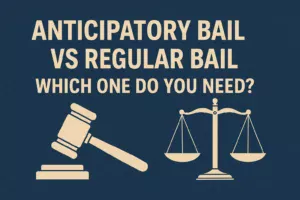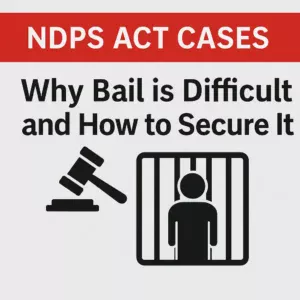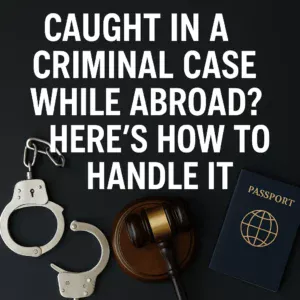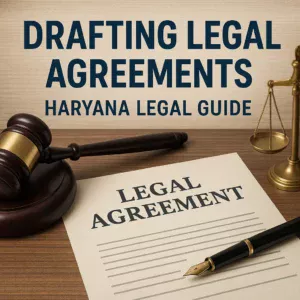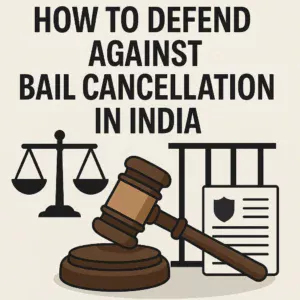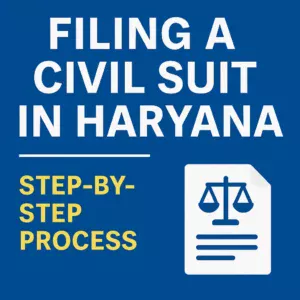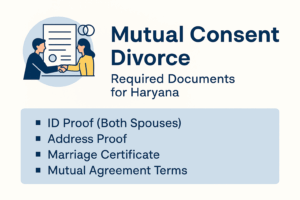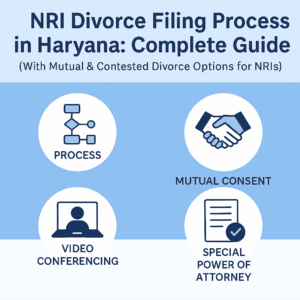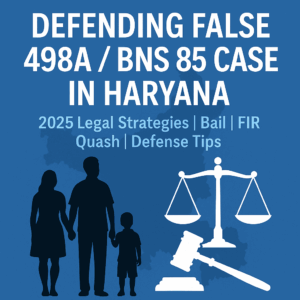This article is guide about Protecting Parental Rights In Cases Of International Child Abduction.International child abduction, often arising during cross-border family disputes, presents complex legal challenges, especially concerning parental rights. In India, such cases have seen an uptick with the increase in binational marriages. This article delves into the framework and remedies available under Indian law for protecting parental rights in cases of international child abduction.
Understanding International Child Abduction
What Constitutes International Child Abduction?
International child abduction typically occurs when a child under the age of 16 is taken to, or retained in, a country that is not their habitual residence, by a parent or guardian, without the consent of the other parent or legal authorization. This act not only disrupts the child’s living situation but also infringes upon the custody rights established by the court of the child’s habitual residence.
The Legal Framework in India
India is not a signatory to the 1980 Hague Convention on the Civil Aspects of International Child Abduction, which seeks to protect children from abduction and retention across international borders by providing a procedure to bring about their prompt return. However, Indian courts have taken cognizance of the issue, evolving a body of jurisprudence that navigates through the principles of the Convention and Indian laws.
Protecting Parental Rights In Cases Of International Child Abduction Under Indian Law
The Guardians and Wards Act, 1890
This Act is often invoked in cases of child abduction. It empowers the Indian courts to make orders for the custody of minors, considering the child’s welfare as the paramount concern.
The Hindu Marriage Act, 1955
Under this Act, courts can pass orders pertaining to the custody of children from marriages solemnized under its provisions, focusing again on the best interests of the child.
The Protection of Children from Sexual Offences (POCSO) Act, 2012
Though not directly related to child abduction, this Act underscores the importance of safeguarding children from abuse and exploitation, a principle central to abduction cases.
Judicial Response and Remedies
High Court’s Jurisdiction
The High Courts in India, under their inherent powers, can issue writs of Habeas Corpus to ensure the return of an abducted child to their lawful guardian, prioritizing the child’s welfare above all.
Seeking Help from Central Authorities
Though India is not a Hague Convention member, the Central Government acts as a nodal point for issues related to international child abduction. It coordinates with foreign governments to amicably resolve such disputes.
Civil Remedies
Parents can also seek civil remedies, including custody or restraining orders, from family courts, which are guided by the principle of ensuring the child’s best interests.
International Cooperation and Legal Assistance
Despite not being a Hague Convention signatory, India engages in diplomatic dialogues and legal cooperation with other countries to handle cases of international child abduction. Bilateral agreements and mutual legal assistance treaties (MLATs) play a crucial role in this process.
Conclusion: Ensuring the Child’s Welfare
In cases of international child abduction, the paramount concern is the child’s welfare. Indian law, while not directly aligned with the Hague Convention, offers a robust framework for protecting parental rights and ensuring the child’s return. Through a combination of domestic legislation, judicial precedents, and international cooperation, India seeks to address the challenges posed by international child abduction, emphasizing the child’s best interests at every turn.
FAQs on Protecting Parental Rights in Cases of International Child Abduction Under Indian Law
1. What is international child abduction?
A: International child abduction occurs when a child under 16 is taken to or retained in a foreign country without the consent of the other parent or legal authority, disrupting the child’s habitual residence and infringing on established custody rights.
2. Is India a signatory to the Hague Convention on International Child Abduction?
A: No, India is not a signatory to the 1980 Hague Convention on the Civil Aspects of International Child Abduction.
3. What laws in India deal with child abduction?
A: The Guardians and Wards Act, 1890, and The Hindu Marriage Act, 1955, are primary laws, along with relevant sections of the Indian Penal Code (IPC).
4. How does the Indian legal system prioritize cases of child abduction?
A: The Indian legal system prioritizes the welfare of the child as the paramount concern in abduction cases.
5. Can a parent seek the return of an abducted child to India?
A: Yes, a parent can petition Indian courts for the return of an abducted child, often through a Habeas Corpus writ.
6. What is a Habeas Corpus writ in the context of child abduction?
A: It’s a legal order to produce an abducted child in court, determining the legality of the child’s removal or retention.
7. How does India resolve international child abduction cases without being part of the Hague Convention?
A: India resolves such cases through its legal system, bilateral treaties, and diplomatic channels, focusing on the child’s welfare.
8. Can foreign courts’ custody orders be enforced in India?
A: Foreign custody orders may not be directly enforceable but can influence Indian court decisions regarding the child’s welfare.
9. What role does the Indian government play in international child abduction cases?
A: The Indian government acts as a mediator, coordinating with foreign governments to resolve abduction cases amicably.
10. Are there any special courts in India for handling child abduction cases?
A: No, there are no special courts, but family courts and High Courts deal with such cases prioritizing the child’s welfare.
11. What actions can a justify-behind parent take in India if their child is abducted internationally?
A: They can file a petition in a High Court for a Habeas Corpus writ, seek diplomatic assistance, and initiate legal proceedings under relevant Indian laws.
12. How do Indian courts determine the child’s habitual residence?
A: Courts assess the child’s living conditions, schooling, and social life to determine habitual residence, focusing on stability and continuity.
13. Can a parent facing child abduction charges in India seek bail?
A: Yes, but bail considerations depend on the case’s specifics, including the child’s welfare and legal arguments.
14. What preventive measures can parents take to avoid international child abduction?
A: Parents can seek court orders restricting the child’s international travel and ensure legal custody arrangements are clear and documented.
15. How are child abduction cases expedited in the Indian legal system?
A: While there’s no formal fast-tracking, courts recognize the urgency and aim to prioritize these cases considering the child’s welfare.
16. What is the role of the Central Government in child abduction cases?
A: The Central Government acts as a liaison, facilitating communication and negotiations between the Indian parent and foreign authorities.
17. Can Indian courts refuse the return of an abducted child?
A: Yes, if returning the child would harm their welfare, Indian courts can refuse return based on the child’s best interests.
18. How does India collaborate with non-Hague countries in child abduction cases?
A: Through diplomatic channels, bilateral agreements, and mutual legal assistance treaties (MLATs) to protect children’s rights.
19. Can a child’s opinion be considered in abduction cases?
A: Yes, courts may consider the child’s opinion, especially if they are of sufficient age and maturity, in determining their best interests.
20. What support services are available for parents of abducted children in India?
A: Parents can seek support from NGOs, legal aid services, and the Indian government’s nodal department for child protection.
21. How are international child abduction cases documented in India?
A: Cases are documented through legal filings in courts, police reports, and correspondence with foreign and domestic authorities.
22. Can a parent be extradited from India for international child abduction?
A: Extradition depends on the extradition treaties between India and the country requesting extradition, along with the specifics of the case.
23. What legal resources are available for parents in India facing international child abduction?
A: Legal resources include hiring a specialized lawyer, seeking assistance from the Ministry of External Affairs, and utilizing legal aid services.
24. How long do child abduction cases typically take to resolve in India?
A: Resolution times vary widely based on case complexity, legal procedures, and international cooperation.
25. Can custody decisions in Indian courts be appealed in international child abduction cases?
A: Yes, custody decisions can be appealed within the Indian legal system up to the Supreme Court.
26. How does Indian law treat parental kidnapping?
A: Parental kidnapping is addressed under the IPC and family law, with the child’s welfare as the primary consideration.
27. Are there any international agreements besides the Hague Convention that influence India’s handling of child abduction?
A: Yes, bilateral treaties and MLATs with specific countries can influence the handling of such cases.
28. What impact does international child abduction have on parental rights in India?
A: It can lead to complex legal battles over custody and parental rights, emphasizing the need for legal resolution focusing on the child’s welfare.
29. How can Indian parents ensure their rights are protected in foreign abduction cases?
A: By engaging with legal experts familiar with international family law, and through diplomatic and legal channels.
30. What future developments can be expected in India regarding international child abduction?
A: Possible developments include enhanced international cooperation, legislative changes, and increased awareness and preventive measures.





